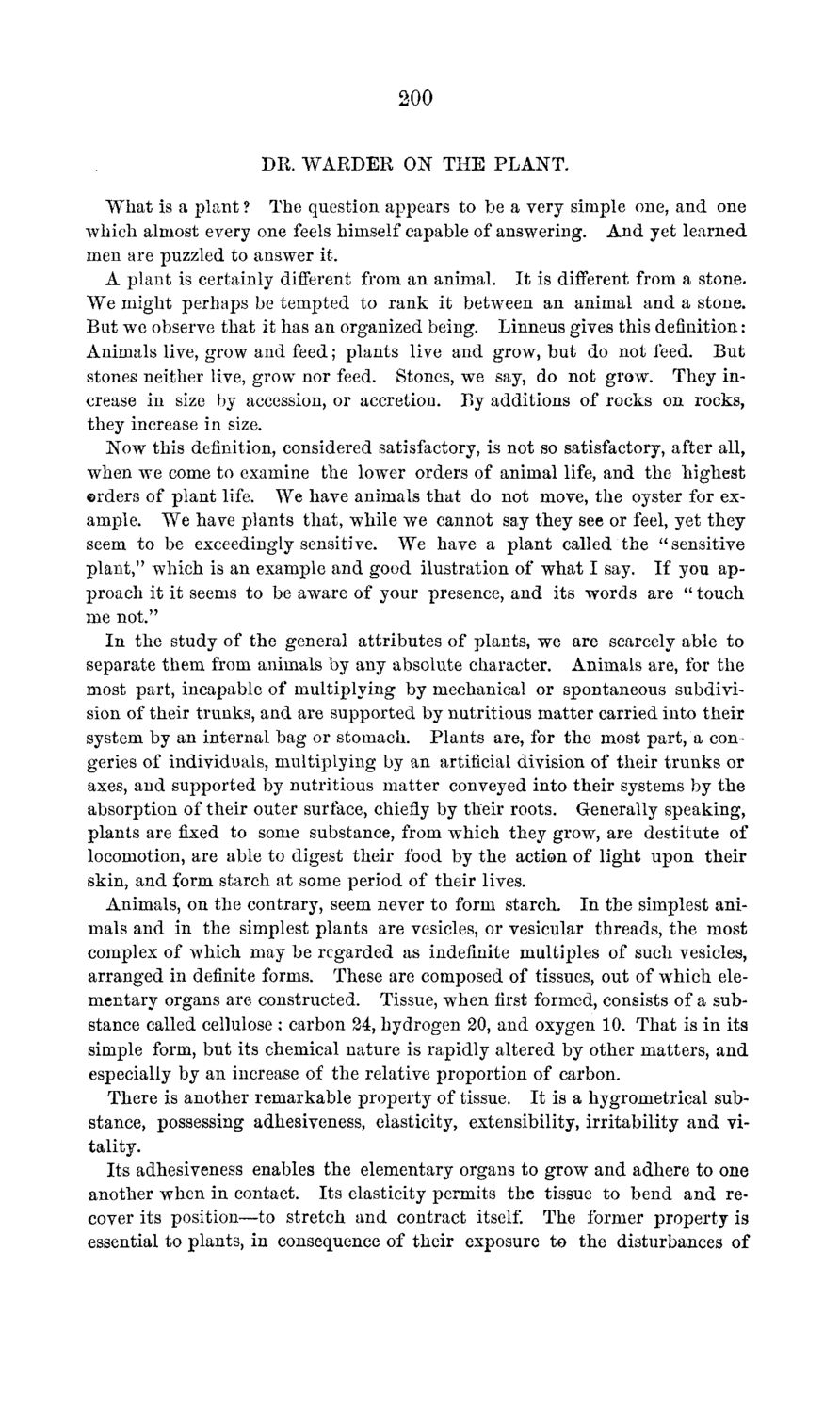| |
| |
Caption: Board of Trustees Minutes - 1869
This is a reduced-resolution page image for fast online browsing.

EXTRACTED TEXT FROM PAGE:
200 DR. W A R D E R ON T H E P L A N T . W h a t is a plant ? The question appears to be a very simple one, and one which almost every one feels himself capable of answering. And yet learned men are puzzled to answer it. A plant is certainly different from an animal. It is different from a stone. W e might perhaps be tempted to r a n k it between an animal and a stone. But we observe that it has an organized being. Linneus gives this definition: Animals live, grow and feed; plants live and grow, but do not feed. B u t stones neither live, grow nor feed. Stones, we say, do not grow. They increase in size by accession, or accretion. By additions of rocks on rocks, they increase in size. Now this definition, considered satisfactory, is not so satisfactory, after all, when we come to examine the lower orders of animal life, and the highest ©rders of plant life. We have animals that do not move, the oyster for example. We have plants that, while we cannot say they see or feel, yet they seem to be exceedingly sensitive. We have a plant called the "sensitive plant," which is an example and good ilustration of what I say. If you approach it it seems to be aware of your presence, and its words are " touch me not." I n the study of the general attributes of plants, we are scarcely able to separate them from animals by any absolute character. Animals are, for the most part, incapable of multiplying by mechanical or spontaneous subdivision of their trunks, and are supported by nutritious matter carried into their system by an internal bag or stomach. Plants are, for the most part, a congeries of individuals, multiplying by an artificial division of their trunks or axes, and supported by nutritious matter conveyed into their systems by the absorption of their outer surface, chiefly by their roots. Generally speaking, plants are fixed to some substance, from which they grow, are destitute of locomotion, are able to digest their food by the action of light upon their skin, and form starch at some period of their lives. Animals, on the contrary, seem never to form starch. In the simplest animals and in the simplest plants are vesicles, or vesicular threads, t h e most complex of which may be regarded as indefinite multiples of such vesicles, arranged in definite forms. These are composed of tissues, out of which elementary organs are constructed. Tissue, when first formed, consists of a substance called cellulose ; carbon 24, hydrogen 20, and oxygen 10. That is in its simple form, but its chemical nature is rapidly altered by other matters, a n d especially by an increase of the relative proportion of carbon. There is another remarkable property of tissue. I t is a hygrometrical substance, possessing adhesiveness, elasticity, extensibility, irritability and vitality. Its adhesiveness enables the elementary organs to grow and adhere to one another when in contact. Its elasticity permits the tissue to bend a n d recover its position—to stretch and contract itself. The former property is essential to plants, in consequence of their exposure to the disturbances of
| |